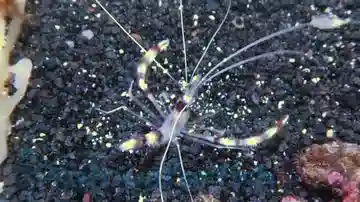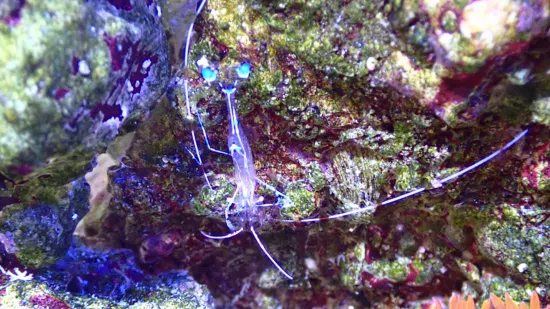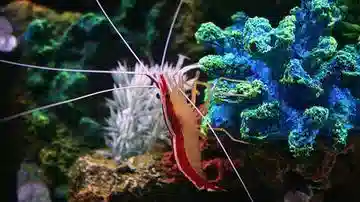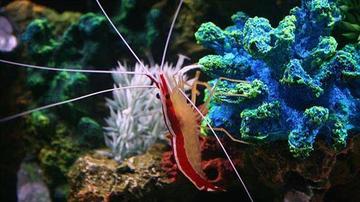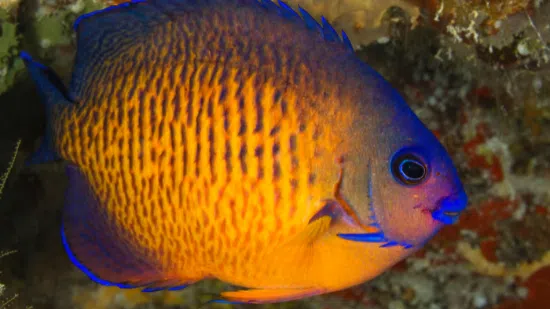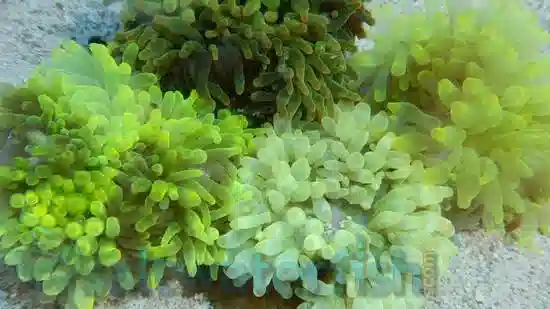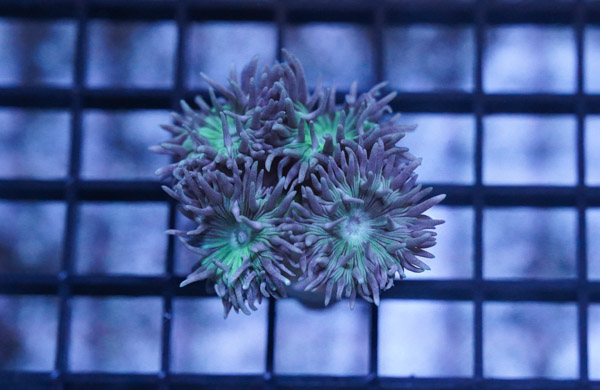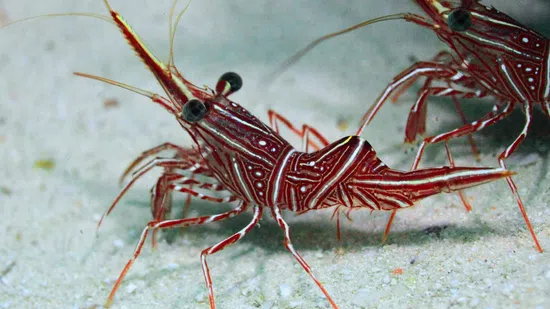Camelback Shrimp - South Asia
Rhynchocinetes uritai
(0 Reviews)
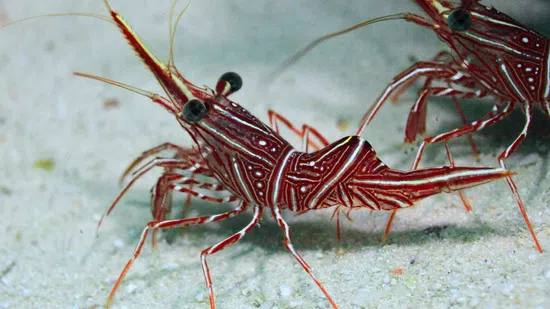
Camelback Shrimp - South Asia
Rhynchocinetes uritai
(0 Reviews)
{{ item.name }}
Size: {{ item.extra_field_3 }}
${{ getFormattedPrice(item.saleprice) }} ${{ getFormattedPrice(item.price) }}
Free Shipping
With
$199.00
or more in Marine Life.
More details...
Care Facts
There are no key facts available for this product.
The Camelback Shrimp, Rhynchocinetas durbanensis, also known as the Camel Shrimp, Hinge Back Shrimp, Dancing Shrimp, Candy Shrimp or Humpback Shrimp, features a characteristic bump on its back with the same colors and patterns as the Peppermint Shrimp. It is a peaceful species that thrives in tanks with plenty of live rockwork and will be a beneficial tank member as it is a proficient sand-sifter, will feed on detritus, and generally keep the tank clean. Like most other Shrimp species, the Camelback Shrimp molts often releasing itself of its former exoskeleton as it grows larger.
The Camelback Shrimp (Rhynchocinetas durbanensis): A Delightful Addition to Saltwater Aquariums
The Camelback Shrimp (Rhynchocinetas durbanensis) is a captivating and unique species that adds a touch of quirky charm to saltwater aquariums. With its distinctive humpbacked appearance and peaceful nature, this shrimp has become a sought-after choice among marine enthusiasts. Let's explore the Camelback Shrimp's habitat, reef-safe nature, size, lifespan, diet, aquaculture potential, molts, other common names, and compatible tank mates.
Habitat and Distribution of the Camelback Shrimp
The Camelback Shrimp is native to the warm waters of the Indo-Pacific region, including the Red Sea and the western Indian Ocean. In the wild, they are often found in shallow reef areas with plenty of hiding spots among coral rubble and rocks.
Reef-Safe Nature of the Camelback Shrimp
The Camelback Shrimp is considered reef-safe, making it an excellent addition to reef aquariums. They are peaceful towards corals and other invertebrates, and their presence can contribute to a thriving reef environment.
Size and Lifespan of the Camelback Shrimp
Camelback Shrimp are relatively small, typically reaching lengths of about 1.5 to 2 inches (3.8 to 5 cm). With proper care, they can have a lifespan of up to two years in a well-maintained aquarium.
Diet and Feeding Habits of the Camelback Shrimp
In their natural habitat, Camelback Shrimp are omnivores, feeding on various food sources, including plankton, algae, and small crustaceans. A home aquarium readily accepts a varied diet consisting of high-quality frozen and live foods such as brine shrimp, mysis shrimp, and marine pellets.
Aquaculture Potential of the Camelback Shrimp
The Camelback Shrimp is readily available in the aquarium trade, but most specimens are wild-caught rather than captive-bred. Breeding and rearing this species in captivity can be challenging, so they are predominantly sourced from the wild.
Molts of the Camelback Shrimp
Like other shrimp species, the Camelback Shrimp undergoes molting to grow and regenerate their exoskeleton. During this process, they may become more reclusive and vulnerable to predation until their new exoskeleton hardens.
Other Common Names for the Camelback Shrimp
In addition to the name "Camelback Shrimp," this species is also known as the "Humpback Shrimp,” Hinge Back Shrimp,” “Camel Shrimp,” or "Dancing Shrimp."
Five Compatible Tank Mates for the Camelback Shrimp
- Royal Gramma (Gramma loreto): Known for its vivid purple and yellow hues, the Royal Gramma is a peaceful fish that adds a splash of color to any aquarium. Its serene nature makes it a perfect companion for the Camelback Shrimp.
- Cleaner Shrimp (Lysmata amboinensis): These shrimp are recognized for their cleaning behavior, where they remove parasites from fish. Their peaceful disposition ensures they can coexist harmoniously with the Camelback Shrimp.
- Feather Duster Worm: This invertebrate is not only safe for shrimps but also introduces a unique visual element to the tank with its feathery tentacles that it uses for feeding.
- Six-Line Wrasse (Pseudocheilinus hexataenia): This vibrant and colorful fish is active and lively. While they can be a bit more assertive, in a well-structured tank with plenty of hiding spaces, they can coexist with the Camelback Shrimp.
- Nassarius Snail: These snails are excellent scavengers that help in keeping the substrate clean. They burrow in the sand and emerge when they sense food, adding an interesting dynamic to the tank alongside the Camelback Shrimp.
The Camelback Shrimp (Rhynchocinetas durbanensis) is a delightful and charming addition to saltwater aquariums. Its unique humpbacked appearance and peaceful nature make it popular among marine enthusiasts. Aquarists can enjoy the beauty and grace of these captivating shrimp in their aquatic havens by providing them with a suitable environment, compatible tank mates, and proper care.
Currently Camelback Shrimp - South Asia does not have any reviews.


